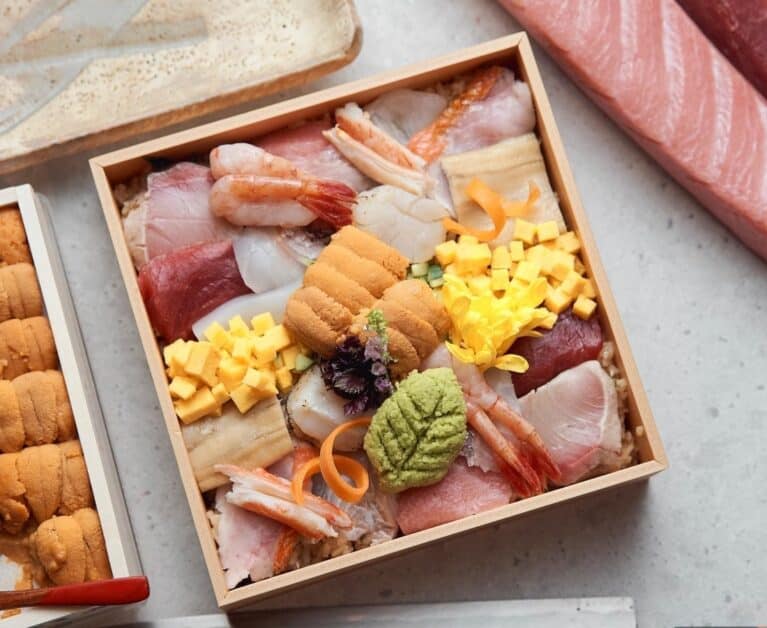Off Menu Hong Kong 2019: Five Ingredients Championed at the Debut of T. Dining’s Food Festival at The Peak Galleria
PUBLISHED November 18th, 2019 06:56 pm | UPDATED May 12th, 2023 05:16 am
The past weekend saw the inaugural edition of Off Menu Hong Kong at the Peak Galleria, a celebration of Hong Kong’s dynamic dining scene and those who have shaped it. Organised by T. Dining – Hong Kong Tatler’s editorial dining platform – Off Menu was anchored by chef collaborations between local culinary heavyweights and their international counterparts to create twelve one-off dishes using local ingredients and showcasing indigenous flavours. Rather than bringing you the blow by blow of the techniques and how the chefs paired typically have distinct culinary styles, we found more commonalities in the ingredients used in our experience at the festival, and here are the highlights:
Shiso
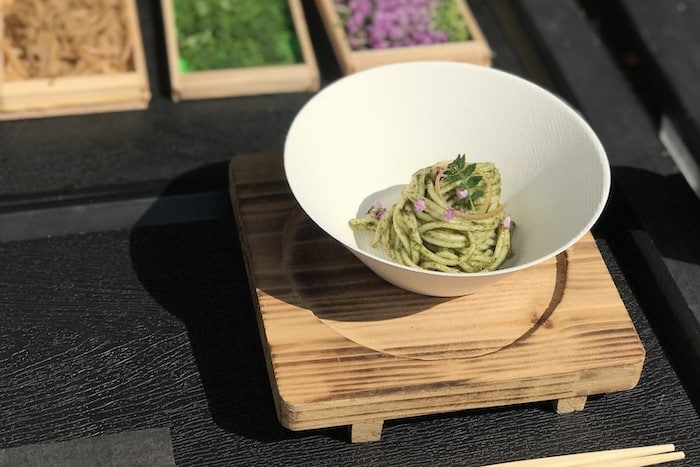
Kermis Tokyo, a pop-up restaurant by Chef Nobu Namiki, came up with a mind-blowing take on the Genovese pasta. Inspired by the shiso leek salad in May Chow’s signature pork belly bao at Little Bao, the noodles are a special, ultra chewy udon sourced from Japan and are tossed with an aromatic “pesto” made from fresh shiso leaves blended with sansho pepper, ume plum and irizake. The stroke of genius here is topping the dish with quintessential Hong Kong ingredients like salted lemon skin and preserved Chinese olives.
Chicken
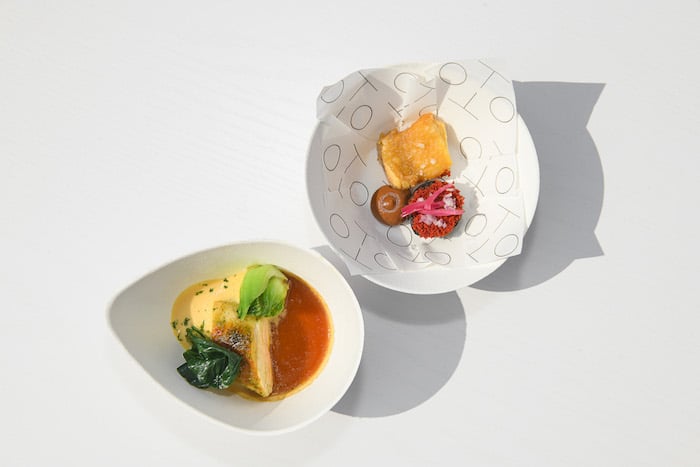
Chicken is a crowd pleaser of a protein, and it was certainly one at Off Menu with Michelin-starred Amber’s take on the classic Cantonese combination of chicken and rice wine. Using Lung Guang chicken – famed for it’s fat to meat ratio – Chef Richard Ekkebus used slow-cooked chicken breast to create a juicy crispy-skinned roulade seasoned with dried sea lettuce. Paired with chicken jus that’s flavoured with oyster sauce and dried oysters, as well as sabayon mixed with Shaoxing wine, it was a feast for the senses.
Chef Jordy Navarra of Manila’s Toyo Eatery utilised a different part – legs and thighs – of the same bird for a rendition of a Filipino favourite. Fried to crisp, the chicken was served with a homemade banana catsup – think banana blossom, banana peel vinegar and fermented saba bananas – that is less tangy but has way more body than your regular ketchup.
Abalone
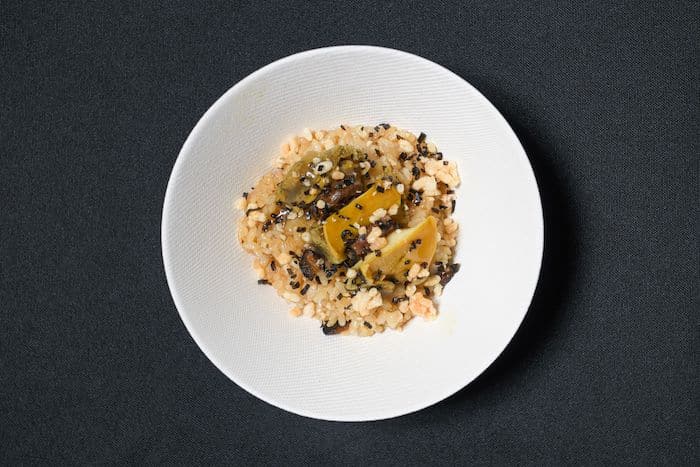
A luxury shellfish that used to only make an appearance at Chinese New Year – at least, for me – the abalone was used by multiple chefs to different ends at Off Menu Hong Kong. Chef Richie Lin of Taipei’s Mume made claypot rice with sushi rice of Taiwan and shiitake mushroom stock, which was topped with a bouncy abalone cooked with white daikon in dashi and duck liver sausage. We approve of this surf and turf combination.
Island Shangri-La’s new Executive Chef Uwe Opocensky’s – representing Restaurant Petrus – slow-cooked Australian abalone, on the other hand, is tender to the bite. Served with a cream made with the shellfish’s own liver, it’s paired with a smoky and entirely vegetarian XO sauce made with local Hong Kong vegetables including aubergine, garlic, onion, chili, and wild pepper leaves.
Wagyu Beef
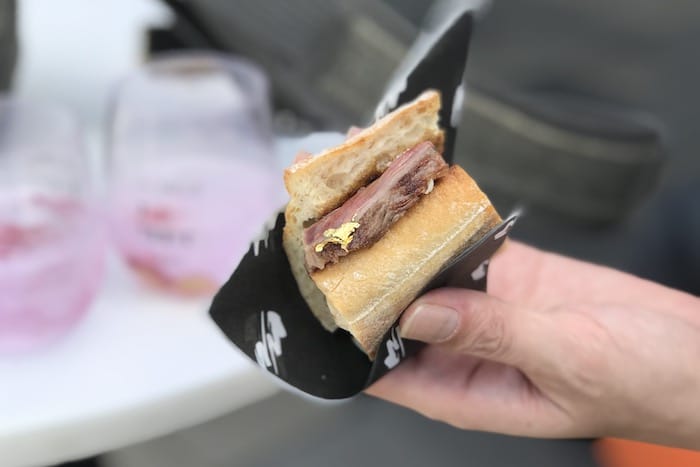
Wagyumafia made waves in Hong Kong when it opened its first branch outside of Japan in the city. Chef Hisato Hamada’s Home Kong Hoagie is inspired by the glitz of his adopted home and see strips of grilled Ozaki striploin steak, potato purée, black truffle sauce, and mitarashi sauce (a sweet Japanese soy glaze) sandwiched in a baguette. There’s gold leaf for garnish, because why not?
Rice
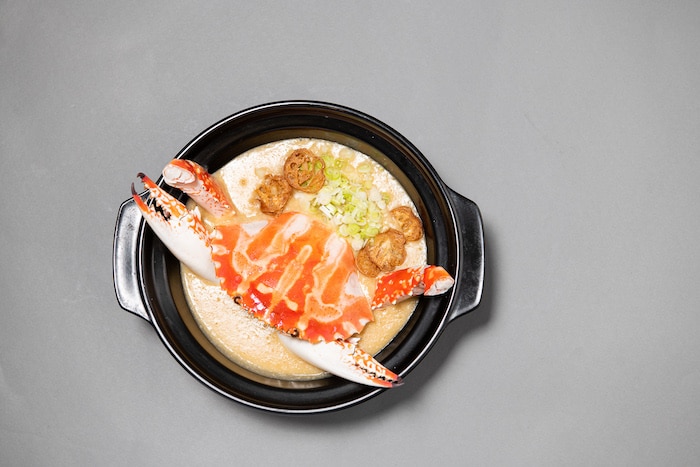
Last but not least, the staple of most Chinese diets. My Cantonese grandmother would have approved of VEA’s take on my comfort food – congee. Chef Vicky Cheng bloomed rice grains in a mixture of salt and oil, which are then cooked in a flower crab shell stock. Tender pieces of fish maw and handpicked flower crab meat are stirred through the rich and silky congee, and upon serving, topped with crunchy chilli flecked preserved turnip and slices of crisp fried dough.
Chef Palash Mitra of Rajasthan Rifles created a pulao (similar to pilaf) with a local short grain rice that is similar to Gobindobhog, a type of sticky rice from West Bengal. Adoring the luscious grains are scallops, shrimp, squid and crab, and it’s served with a saffron raita, raw green papaya chutney, and fennel-onion salad.
Top image: Grilled Abalone With Smoked Vegetarian XO Sauce And Wild Pepper Leaves, Petrus at The Landmark, Mandarin Oriental Hong Kong

